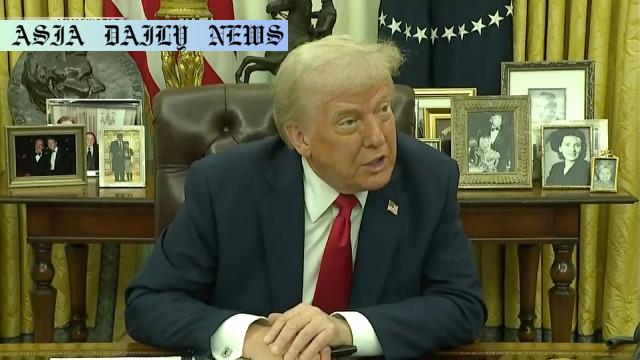Tariffs: US President Donald Trump is set to announce reciprocal tariffs, which will reportedly go into immediate effect.
- Key Point 1: Trump is set to announce reciprocal tariffs on Wednesday.
- Key Point 2: The new trade policy is part of a push for US manufacturing.
- Key Point 3: White House press confirmed advisors with decades of trade expertise are involved.
- Key Point 4: Trump hinted at the possibility of exemptions for some trading partners.

Trump’s Vision for Reciprocal Tariffs
On Wednesday, US President Donald Trump is scheduled to announce new reciprocal tariffs aimed at reshaping global trade and fortifying the United States’ economic backbone. These measures, expected to go into effect immediately, promise to be a seismic shift in America’s trade policies, potentially sparking both domestic and international reactions. The White House has confirmed that these tariffs are part of the administration’s strategy to revive American manufacturing and transform the United States into a global industrial powerhouse.
Focused Efforts Towards an Economic Renaissance
According to White House Press Secretary Karoline Leavitt, Trump has convened a team of trade experts and advisors who, collectively, boast decades of experience in navigating the complexities of global tariffs and trade laws. Leavitt emphasized that the administration’s ultimate goal is to initiate what she described as a golden age for American manufacturing. By recalibrating trade policies, the administration aims to empower businesses and provide a competitive edge to domestic industries struggling under previous trade structures.
Details of the Plan Still Under Wraps
At the time of writing, specific details of the tariffs remain confidential. Press Secretary Leavitt stopped short of providing information regarding the percentage increase in tariff rates, the scope of targeted imports, or the countries deemed non-compliant with the US trade directives. However, there is growing speculation about the countries that might face these tariffs. While some analysts anticipate broad application, others forecast selective targeting to penalize nations posing significant trade imbalances with the US.
Addressing Concerns Over Exemptions
When asked about potential exemptions for allied trading partners, Trump’s response of “It depends” raises further intrigue. This ambiguity leaves room to speculate about whether these tariffs will include exemptions to maintain strategic alliances. Currently, nations like Canada, the European Union, and Japan are being discussed among trade analysts as likely candidates for exemption from harsh tariffs.
Global Trade Implications
The announcement of reciprocal tariffs is positioned to challenge global trade norms. Many countries, accustomed to the existing structures of international commerce, may find themselves reassessing their trade agreements with the United States. This regulatory push could incite retaliatory tariffs from affected nations, potentially leading to a trade war. However, proponents believe this aggressive stance could create a fairer trade environment and rejuvenate the US economy by encouraging manufacturing and fostering local innovation.
In conclusion, President Trump’s reciprocal tariffs represent both an opportunity and a potential flashpoint in global economic discourse. With details of the scope and nature of these tariffs still undisclosed, their ultimate impact remains a subject of considerable debate and anticipation.



Commentary
Transforming America’s Trade Landscape
President Trump’s bold move to introduce reciprocal tariffs signifies his desire to change the dynamics of global trade. For decades, the United States has been perceived as having an unbalanced trade relationship with numerous countries. By enforcing these tariffs, Trump is attempting to reset the trade playing field. On the surface, this policy might seem aggressive, yet it targets a broader vision of making America self-reliant and competitive. Such shifts are particularly relevant in a globalized era where nations jostle for influence in supply chains.
Potential Fallout on Global Relations
While the vision is commendable, the global ramifications of these tariffs cannot be ignored. Nations may react defensively, viewing the move as a provocation rather than cooperation. This raises concerns about retaliatory tariffs that could hurt both consumers and global industries. For instance, tariffs on specific goods could increase costs for American businesses relying on imported materials. This interdependence in global trade means that unilateral action, while appearing decisive, needs delicate handling to mitigate unintended consequences.
A Path Towards Self-Reliance
On the flip side, these tariffs could inject fresh energy into American manufacturing. Domestic companies, previously disadvantaged by cheaper international products, might see a resurgence under protectionist policies. However, a longer-term strategy—including investment in workforce training, technology, and infrastructure—will be crucial to sustaining growth. Without these supplementary measures, tariff reprieves alone may fall short of ushering the golden age envisioned by the administration.
Overall, while Trump’s reciprocal tariff plan represents an ambitious push for economic transformation, its implications both at home and abroad demand close scrutiny. If executed with precision, it could serve as a cornerstone for America’s future prosperity. However, global pushbacks and market adjustments remain inevitable challenges.